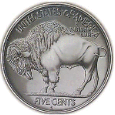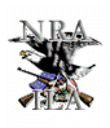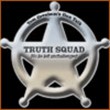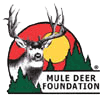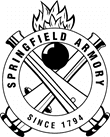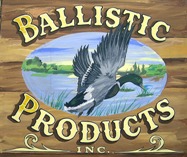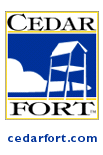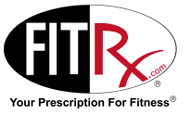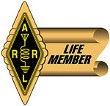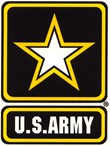| Hydroponics is the process of growing plants without soil. It is not a new idea and it really isn't difficult once the basic requirements are met. There are two basic methods of hydroponics, one being the nutrient solution method and the other being the sand or gravel method.
All plants need certain elements to maintain growth and reach maturity. In nature, these elements are supplied naturally or with minimum attention by man. When plants grow hydroponically, all of the elements have to be supplied and controlled by the grower. As a result, many technical problems can arise making hydroponics gardening very labor intensive and quite costly when done on a small scale. Nutrient deficiencies and toxicities show up quickly, and often, unless carefully monitored. Yields are generally lower than field grown crops and the flavor of the resulting fruit or vegetable usually falls short of our expectations.
By now, you may have decided that those vine-ripened tomatoes freshly picked during a January blizzard are not for you. Certainly hydroponics is not for everyone, but for those who have a green thumb or a curiosity that won't allow the idea of picking fresh vine-ripened tomatoes to rest, it can be a lot of fun. Hydroponics will provide a great education for children learning about photosynthesis and plant growth, not to mention the conversation piece when friends drop by. And those fresh foods!
Requirements for Plant Growth
As mentioned earlier, growing plants hydroponically requires an artificial supplement of all the elements needed to sustain plant life and growth.
Water
Plants are 80 to 90 percent water. This water provides support for the plant as well as carrying dissolved nutrients to the necessary parts of the plant for growth to occur. Plants use a lot of water and must have a constant supply to maintain optimum growth.
Nutrients
All plants require mineral elements including nitrogen, phosphorous, potassium, magnesium, calcium, sulfur, iron, manganese, boron, copper, zinc and molybdenum. Carbon dioxide and oxygen are supplied by air and water.
Light
For plants to grow, light is a necessity. Normal sunlight of at least 8 to 10 hours a day is necessary to support growth and encourage flowering. Under artificial light conditions, the use of grow-lights or a blend of incandescent and fluorescent light bulbs will provide enough light if left on long enough to support plant growth. It is not necessary to keep the grow lights on 24 hours a day and, in fact, doing so will retard the flowering process. Flowering is a function of the number of hours of darkness, not the number of hours of sunlight. Simply remember to allow for more hours of sunlight during the growing period, and when the plant is large enough to support flowering, increase the number of hours of darkness daily by turning off the lights earlier.
Temperature
Plants grow within a wide temperature range. Warm-season plants, such as beans and tomatoes, do best with temperatures between 65 and 85 degrees F. Cool season plants, such as most herbs, root crops and members of the cabbage family, grow best at temperatures about 10 degrees cooler.
Oxygen
Plant roots have to have oxygen to grow and to take up water and nutrients. Soils generally contain enough oxygen, but roots grown in water solutions have to have oxygen added.
Getting Started
Preparing the Nutrient Solution The nutrient solution is the medium the plant will be grown in; therefore, it must be complete with all of the elements the plant needs to sustain optimum growth.
Dissolve any 10-10-10 commercial fertilizer at a rate of one heaping tablespoon per gallon of water. If you use the commercial granulated type, a portion of the fertilizer will appear not to dissolve. This is the clay particle the nutrient has been attached to, don't worry about it. To this solution, add the minor element solution listed below.
Minor Element Solution
Mix 1/4 level teaspoons of boric acid and approximately 1/10 teaspoon of manganese chloride in a quart of water. Use 1/2 cup of this solution for every ten gallons of nutrient solution used.
Iron
Mix 1/2 level teaspoon of chelated iron (NaFe DTA) in a quart of water. Use 1 3/5 cups per 10 gallons of nutrient solution. If chelated iron is not available, use ferrous sulfate. Dissolve 1 teaspoon in a quart of water and use 1 teaspoon of this solution per quart of nutrient solution.
Checking the Acidity
After mixing all of the minor elements and the complete nutrient solution, combine to make a working solution. Before placing the plant into the working solution, check the pH of the solution. This will tell you if the solution is too acid or alkaline. the test can be made by dipping a small piece of litmus paper, available at most drug stores, into the working solution. You are seeking a pH of between 6.5 to 7.5.
If the working solution is too alkaline (pH is above 7), add a few drops of dilute sulfuric acid per quart of solution. It the working solution is too acid (pH is below 7), add a few drops of sodium hydroxide (NaOH). Use care as these chemicals will burn clothes and skin.
Nutrient Solution Method
This method of hydroponics allows the plant roots to grow in solution containing nutrients. A plant is suspended through the top of a jar with the roots dangling freely in the solution and plant top above the solution line. For growing one or two plants, use a jar with a metal lid. Cut a hole approximately two inches in diameter in the center of the lid and place the plant through the hole. Support the plant by packing cotton around the stem.
Roots grow best in the dark, so paint the jar a dark color leaving a narrow strip down the side of the jar so you can see the roots grow and can determine the level of the nutrient solution. For larger plants, increased support will be required as the plants get larger.
Aeration
As the plant grows, oxygen must be added to replace that which is taken up by the plant. The easiest method is to bubble air through the solution in use. An aquarium pump may be used with satisfactory results. If this cannot be done, discard the old solution in the jar every two to three days when the plant is small. Once the plant reaches a larger size, you will have to replace the working solution every day.
Changing the Solution
If you use the pump procedure, you will have to remove the working nutrient solution every 10 to 14 days. The actual rate of changing will vary with the different size of the plant, temperature and amount of light provided the plant.
Sand or Gravel Method
This method of hydroponics involves the use of clean sand or washed gravel, free of sand or silt. Growing plants in this manner is similar to a field grown method except that the grower must control and supply all of the elements for the plant growth.
The container needed for this method can be of any size with the capacity to retain the nutrient solution until flooding of the container is complete; and then, to allow the solution to drain completely from the container from the bottom.
Place the seed or plant in the medium and then flood the medium with nutrient solution 1 to 3 times a day or enough to keep the medium moist. Allow the solution to completely drain through the medium each time. You may reuse the nutrient solution over and over for 10 to 14 days. After the last flooding of nutrient solution, flood the medium with clean water to flush out accumulated minerals that can build up a toxicity level for the plant.
Charting the Growth
It is important to keep records of every flooding, nutrient solution change and flushing. It is also important to keep track of the length of daylight and hours of dark. You may want to grow miniature flowers by shortening the day length and causing the plant to flower when it is only a few inches tall.
Some nutrients deficiency symptoms you may want to watch for are:
- Nitrogen: Small leaves turn light green or yellow; lower leaves lighter color than the top; weak plant.
- Phosphorous: Plants have dark green leaves; sometimes lower leaves become purplish in color; lower leaves may become yellow between veins.
- Potassium: Yellow spots develop between the veins on lower leaves; yellowing or even dying of leaf margins develop on lower or old leaves.
- Calcium: Tips of young leaves curl and die.
- Magnesium: Leaf margins on lower leaves; lower leaves have yellow spots with green veins.
- Sulfur: Plants have light green leaves; leaf veins have lighter color than the surrounding area; upper leaves are lighter in color than the bottom leaves.
- Iron: New upper leaves turn yellow; edge and tip of leaves may die.
- Manganese: New upper leaves have yellow or dead spots; veins remain green.
- Boron: New tip growth dies; plant becomes brittle.
|
